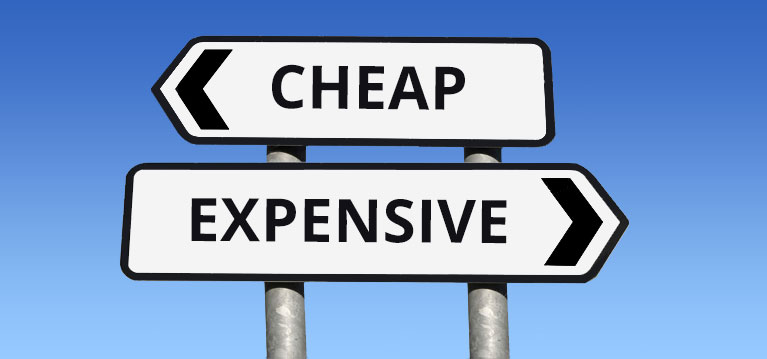When it comes to the stock market, there can be long periods where stocks will be overpriced or underpriced. There are several metrics professionals use to determine if stocks are cheap or expensive. In this blog post, I am going to focus on two of those methods. The Shiller PE Ratio and what is known as the “Buffet Indicator” named after famed investor Warren Buffet.
First off, why does it matter if stocks are cheap or expensive? As I discussed during my previous blog post, “Pokemon Go Proves the Stock Market is Inefficient and Irrational“, people can drive stock prices to irrational levels based on nothing more than expectations. At any given moment, a company stock can trade at huge levels versus its earnings when people expect the company to make more money. If it turns out that those earnings don’t materialize or we have a general bear market (a loss more than 20%), then those stocks will fall back to reality and can lose a ton of their value. A good example would be Chipotle Mexican Grill (Ticker: CMG). The stock once traded at over $700 per share in June of 2015 and currently trades at $402.63. That’s a loss of 42.5% in about a year and a half because earnings growth did not materialize as expected! The real problem is when an entire market gets overheated and we see many overpriced stocks…
One method to see if an entire stock market is expensive was developed by Robert Shiller. Shiller won a Nobel Prize for his work in analyzing the markets back in 2013. He used the earnings of all companies in the S&P 500, smoothed them out over 10 years, and compared it to the index price and adjusted for inflation. You can read a more advanced explanation here. What he found is that there is a median ratio of the index price to the earnings that the companies generate. To put that into English: There are periods when everything is on sale and periods where everything is selling for a surcharge. If you look at a current chart of his work, you will see this:
Shiller PE Ratio

Current Shiller PE Ratio: 27.13 +0.04 (0.15%) 12:03 pm EST, Fri Dec 2
| Mean: | 16.71 | |
| Median: | 16.05 | |
| Min: | 4.78 | (Dec 1920) |
| Max: | 44.19 | (Dec 1999) |
(source: http://www.multpl.com/shiller-pe/)
So if you look at the graph and see how the current value is 27.13 versus the median of 16.05, you can clearly see how the US S&P 500 Index is in overpriced territory. In fact, the US stock market has only been more overpriced two times in US history. Once before the Great Depression and once before the dot com bust of 2000. Not exactly the best time to be going crazy buying stocks aggressively if you ask me!! However, Robert Shiller has been criticized because his work has very little to no predictive capability. Meaning that his work only shows if stocks are cheap or expensive by historical standards, but things can always get more expensive before any type of correction happens as periods of overvaluation can last for years. Especially when the Central Banks around the world are intervening in the stock markets as they are today…
The other indicator I am going to discuss is the “Buffet Indicator” as made famous by legendary investor Warren Buffet. Forbes magazine interviewed Buffet and released an article on June 21, 2016 by Chuck Jones. From that article:
The Buffett Indicator takes the stock market’s market capitalization and divides it by the US Gross Domestic Product. From an interview he did with Fortune in December 2001 Buffett said “For me, the message of that chart is this: If the percentage relationship falls to the 70% or 80% area, buying stocks is likely to work very well for you. If the ratio approaches 200%–as it did in 1999 and a part of 2000–you are playing with fire.”
If we look at that indicator from November 2016, you will see the following:

Source: https://www.validea.com/blog/a-buffett-market-valuation-indicator/#
So right now the ratio is at 124.9% and once again we see it has only been higher twice since 1950. So here is another data point that shows the US stock market is quite expensive by historical standards.
In conclusion, the US stock market is actually quite overpriced when you look at historical standards and compare it to where we are today. However, this does not mean you shouldn’t own stocks. All this is saying is that it is time be cautious. If you are a young investor in their 30’s, then this data really doesn’t mean anything to you. Just invest and save and you have time to ride out the ups and downs. However, if you are retired or near retirement and you need your portfolio to provide income, then this data means quite a bit! This is a time to reduce stock exposure and be conscious of the risk in your portfolio. A good test would be to look at your current portfolio and back test it to see how it would have done in a bear market like 2008. I have the tools to do things like that, so a client can see the risk they are truly taking on. If you are interested in taking a look at the risk you are taking in your portfolio and having a plan in case the stock market crashes, then please contact me!


